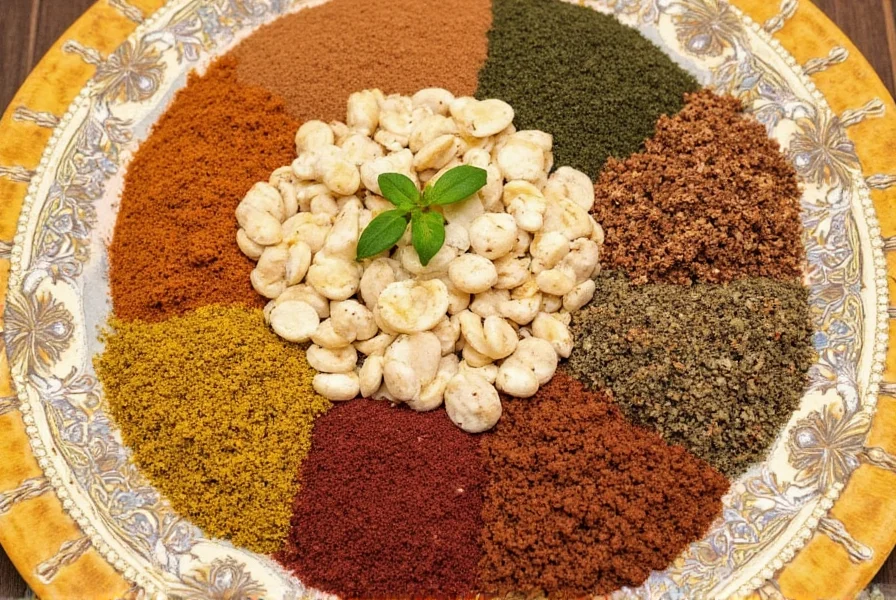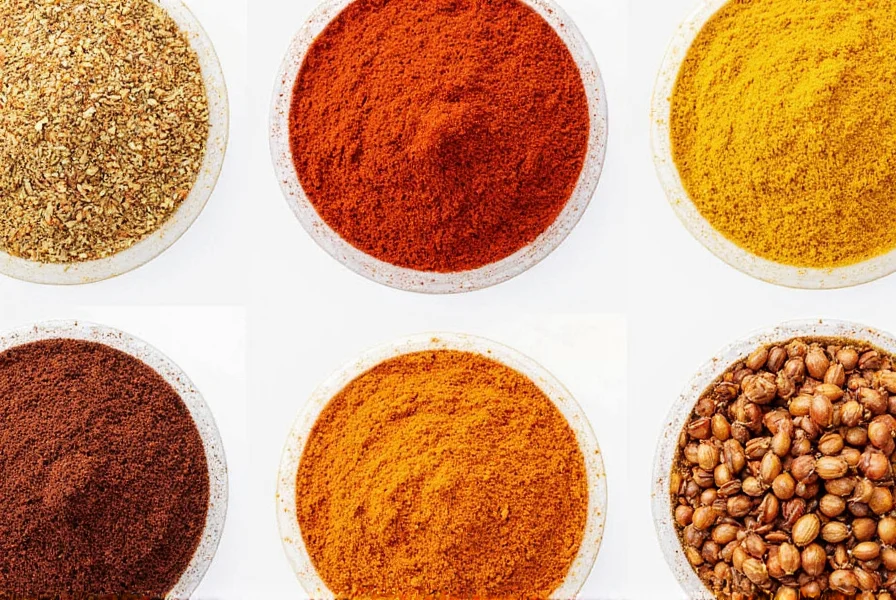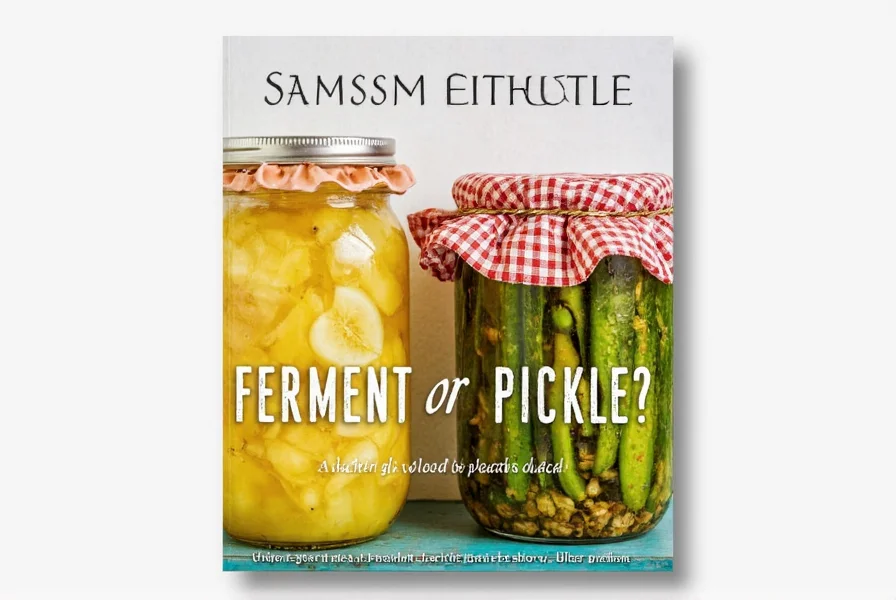African spice blends are traditional mixtures of spices and herbs used across the African continent to enhance the flavor of dishes. These blends vary by region and culture, each with unique ingredients and purposes. From the aromatic Ras el Hanout of Morocco to the fiery Berbere of Ethiopia, African spice blends offer a rich tapestry of flavors that are gaining global recognition.
In this comprehensive guide, we'll explore the origins, ingredients, and culinary uses of Africa's most iconic spice blends. Whether you're a home cook looking to expand your seasoning repertoire or a food enthusiast curious about global cuisines, you'll discover how to incorporate these authentic flavors into your everyday cooking.
| Spice Blend | Traditional Use | Creative Use at Home |
|---|---|---|
| Ras el Hanout | Moroccan tagines and couscous | Season roasted carrots or add to lentil soup for depth |
| Berbere | Ethiopian stews and legumes | Make spiced popcorn or sprinkle on roasted chickpeas |
| Suya Spice | Grilled meat skewers | Mix into mayo for a spicy sandwich spread |
| Doro Wat Spice | Ethiopian chicken stew | Add to tomato sauce for a spicy pasta twist |
| Peri Peri | Barbecue marinades | Toss with fries or drizzle on pizza |
| Shua Spice | Grilled meat seasoning | Use on roasted squash or potatoes |
| Dukkah | Dip with bread | Crust tofu or avocado toast topping |
| Product Name | Features | Best For | Occasion |
|---|---|---|---|
| Spice Garden – Ras el Hanout | Organic, hand-blended in Morocco, no preservatives | Slow-cooked meats, tagines | Weekend dinners, dinner parties |
| Ethio Kitchen – Berbere Blend | Traditional recipe passed down generations, gluten-free | Ethiopian stews, vegan lentil dishes | Vegan feasts, family gatherings |
| Oga Suya Seasoning | Contains real peanut flour, balanced heat level | Meat grilling, snack mixes | Backyard BBQs, game nights |
| African Flavors – Dukkah | Hand-roasted nuts, raw sesame, no added oils | Dipping, coating, garnishing | Brunch, gourmet appetizers |
| Piri Piri Original | Portugal-sourced bird's eye chili, aged vinegar base | Marinades, grilled chicken, hot sauces | Summer barbecues, spicy lovers |
Why African Spice Blends Are Gaining Global Fame
Africa is not just a continent—it's a flavor galaxy. With over 50 countries and hundreds of ethnic groups, each region boasts its own unique approach to seasoning food. Unlike European or Asian spice traditions that have had centuries of exposure in global cuisine, African flavors are still relatively underexplored outside their native regions. But that's changing fast!
Chefs and home cooks around the world are falling head over heels for the depth, warmth, and complexity of African spice blends. From bustling street markets in Lagos to high-end restaurants in Paris, these blends are becoming the go-to secret weapons for anyone wanting to add authenticity and punch to their dishes.

Top 7 African Spice Blends You Should Know
Let's dive into the heart of African cuisine with our curated list of must-know spice blends. We've included details about ingredients, origins, and perfect pairings so you can experiment like a pro.
1. Ras el Hanout (Morocco)
If there's one spice blend that screams "North Africa," it's Ras el Hanout. Literally meaning "top of the shop" in Arabic, this luxurious blend varies from vendor to vendor and often contains between 10–30 different spices.
- Key Ingredients: Cumin, coriander, cinnamon, allspice, ginger, turmeric, cardamom, nutmeg
- Flavor Profile: Earthy, warm, slightly sweet, complex
- Best Used In: Tagines, roasted meats, couscous, lamb shank dishes
- Simple Recipe Idea: Mix with olive oil and rub on chicken thighs before roasting for an authentic Moroccan flavor
2. Berbere (Ethiopia)
The soul of Ethiopian cooking, Berbere is a fiery, aromatic mix that brings life to dishes like Doro Wat (chicken stew) and Misir Wat (red lentils).
- Key Ingredients: Chilies, garlic, ginger, basil, korarima (Ethiopian cardamom), rue, ajwain
- Flavor Profile: Smoky, spicy, herbal, and deeply savory
- Best Used In: Stews, legumes, slow-cooked meats, injera-based dishes
- Simple Recipe Idea: Add to canned tomatoes and coconut milk for an instant Ethiopian-inspired curry sauce
3. Suya Spice (Nigeria)
Fancy skewered, grilled meat with a smoky, nutty bite? Then meet Suya Spice, Nigeria's beloved rub for street-style grilled beef and chicken.
- Key Ingredients: Ground peanuts, chili, ginger, garlic, salt, paprika
- Flavor Profile: Nutty, mildly spicy, earthy
- Best Used In: Grilled meats, kebabs, roasted vegetables
- Simple Recipe Idea: Toss with roasted peanuts and sprinkle over avocado for a Nigerian-style snack
4. Doro Wat Spice (Ethiopia)
This blend is essentially a variation of Berbere tailored specifically for Ethiopia's national dish, Doro Wat.
- Key Ingredients: Red chilies, ginger, turmeric, cardamom, fenugreek, onion powder
- Flavor Profile: Rich, intensely spicy, slightly bitter, aromatic
- Best Used In: Chicken stews, lentil dishes, eggplant recipes
- Simple Recipe Idea: Add to vegetable broth for a flavorful base for Ethiopian-style lentil soup

5. Peri Peri (Southern Africa / Mozambique)
Popularized globally by Nando's, Peri Peri (also known as Piri-Piri) has roots in Portuguese colonial history but was perfected in Southern Africa.
- Key Ingredients: Bird's eye chili, garlic, lemon zest, oregano, paprika, vinegar
- Flavor Profile: Fiery hot, tangy, herbaceous
- Best Used In: Grilled chicken, seafood, marinades, dipping sauces
- Simple Recipe Idea: Mix with olive oil for a quick marinade for shrimp or fish
6. Shua Spice (Kenya/Tanzania)
This East African blend is used to season nyama choma (grilled meat), giving it a rustic, bold flavor profile reminiscent of open-fire cooking.
- Key Ingredients: Coriander, cumin, black pepper, garlic, lemon zest, salt
- Flavor Profile: Fresh, peppery, citrusy, bold
- Best Used In: Grilled meats, barbecue, roasts
- Simple Recipe Idea: Rub on sweet potatoes before roasting for a flavorful side dish
7. Dukkah (Egypt)
Dukkah is a fragrant Egyptian blend often used as a dip (with olive oil) or a crust for proteins.
- Key Ingredients: Hazelnuts, sesame seeds, coriander, cumin, fennel seeds, salt
- Flavor Profile: Nutty, earthy, slightly floral
- Best Used In: Bread dips, fish crusting, salad sprinkling
- Simple Recipe Idea: Mix with Greek yogurt for a flavorful dip for vegetables

How to Use African Spice Blends Like a Pro
Ready to bring these exotic flavors into your everyday meals? Here are some clever ways to use African spice blends beyond their traditional dishes:
Pro Tip: Toast Before Use
To unlock maximum flavor, always toast ground spice blends in a dry pan for 30 seconds before adding them to your dish. This enhances the aroma and deepens the flavor significantly.
Buying Guide: What to Look For in a Quality African Spice Blend
With the rise in popularity of African spice blends, you might find yourself overwhelmed by options. Here's a breakdown of what to look for when choosing a high-quality product:
Key Features to Prioritize
- Natural Ingredients: Avoid artificial additives, preservatives, or fillers like cornstarch or anti-caking agents.
- Authentic Source: Opt for blends made by African artisans or reputable spice brands that work directly with local producers.
- Whole Spices vs. Pre-Mixed: Some blends (like Ras el Hanout) come whole-spice form, allowing you to customize your grind and freshness.
- Packaging: Airtight containers or vacuum-sealed bags help preserve potency and flavor longer.
- Certifications: Organic, fair-trade, or non-GMO certifications ensure ethical sourcing and quality control.
Storage Tips
Store your African spice blends in a cool, dark place away from direct sunlight. For best flavor retention, use within 6 months of opening. Whole spice blends last longer than pre-ground ones, so consider grinding only what you need right before use.
Frequently Asked Questions About African Spice Blends
What are the most popular African spice blends worldwide?
Ras el Hanout from Morocco and Berbere from Ethiopia are currently the most popular African spice blends globally. Ras el Hanout is known for its complex, warm flavor profile used in tagines and couscous, while Berbere brings its signature heat and depth to Ethiopian stews. Suya spice from Nigeria has also gained international popularity, especially through African street food culture.
How do African spice blends differ from other global spice blends?
African spice blends often feature unique combinations of local ingredients not commonly found in other global traditions. Unlike many European spice blends that focus on simplicity, or Asian blends that often emphasize balance, African blends frequently incorporate a wider range of spices (sometimes 20+ ingredients in Ras el Hanout) with bold, complex flavor profiles. Many African blends also feature region-specific ingredients like korarima (Ethiopian cardamom), grains of selim, or prekese that aren't common elsewhere.
Can I make African spice blends at home?
Absolutely! Many African spice blends can be made at home with basic pantry ingredients. While some blends use hard-to-find specialty ingredients (like korarima for authentic Berbere), you can create excellent approximations with more accessible spices. For example, a simplified Ras el Hanout can be made with cumin, coriander, cinnamon, ginger, and cardamom. Toasting whole spices before grinding them will yield the best flavor. The key is understanding the flavor profile you're trying to achieve and adjusting proportions to your taste.
How should I store African spice blends for maximum freshness?
Store African spice blends in airtight containers away from heat, light, and moisture. Dark glass jars or metal tins work best. Whole spice blends (before grinding) can last up to 2 years when properly stored, while pre-ground blends maintain peak flavor for about 6 months. For extended shelf life, consider storing blends in the freezer. Always use dry utensils when handling spices to prevent moisture contamination, which can cause clumping and spoilage.
Are all African spice blends extremely spicy/hot?
No, this is a common misconception. While some blends like Berbere and Peri Peri are indeed spicy, many African spice blends focus more on complex flavor profiles rather than heat. Ras el Hanout is typically warm and aromatic rather than hot, Dukkah is nutty and earthy without significant heat, and Shua spice emphasizes citrus and pepper notes over spiciness. The heat level in African cuisine varies significantly by region and specific blend—many traditional blends offer balanced flavor experiences where heat is just one component among many.
What's the difference between Berbere and Ras el Hanout?
Berbere (Ethiopian) is typically hotter and more focused on chili peppers, with additional heat from ginger and garlic. It often includes unique ingredients like korarima (Ethiopian cardamom) and rue. Ras el Hanout (Moroccan) is generally more complex with up to 30 ingredients, featuring warm spices like cinnamon, nutmeg, and allspice, with less emphasis on heat and more on aromatic complexity. Berbere is primarily used in stews and legume dishes, while Ras el Hanout is versatile across meats, vegetables, and grains.
Where can I buy authentic African spice blends?
Authentic African spice blends can be found through several channels: specialty African grocery stores, online retailers specializing in global spices, directly from African producers via e-commerce platforms, and increasingly in well-stocked mainstream supermarkets. When buying online, look for brands that source directly from Africa or work with African producers. Check ingredient lists for authenticity—real Berbere should include korarima (not regular cardamom), and authentic Ras el Hanout shouldn't contain fillers like cornstarch.
Are African spice blends typically gluten-free?
Most traditional African spice blends are naturally gluten-free as they consist primarily of spices, herbs, and sometimes nuts or seeds. However, always check labels as some commercial blends may contain anti-caking agents or fillers that include gluten. Cross-contamination can also be an issue in facilities that process other gluten-containing products. If you have celiac disease or severe gluten sensitivity, look for certified gluten-free products or make your own blends from whole spices.
How can I tell if my African spice blend has gone bad?
Signs that your spice blend has lost potency or gone bad include: significant fading of color, lack of aroma when rubbed between fingers, clumping (beyond normal settling), or an off smell (musty or stale rather than vibrant and aromatic). Properly stored, ground spice blends last about 6 months at peak quality, while whole spices can remain potent for up to 2 years. The best test is to add a small amount to a simple dish—if you don't notice a significant flavor impact, it's time to replace your blend.
Can I substitute one African spice blend for another in recipes?
Substitutions are possible but require understanding flavor profiles. Berbere and Doro Wat spice can often substitute for each other (Doro Wat is a Berbere variation). Ras el Hanout could substitute for Shua spice in meat dishes but will provide a sweeter, less citrusy profile. Peri Peri can replace Suya spice for heat but lacks the nutty component. When substituting, start with half the recommended amount and adjust to taste. For best results, research the specific flavor profile you're trying to achieve before substituting.
Final Thoughts
African spice blends are more than just seasonings—they're gateways to vibrant cultures, ancient traditions, and unforgettable meals. Whether you're spicing up a Sunday roast with Ras el Hanout or turning ordinary chickpeas into Berbere-spiced snacks, there's no shortage of creativity and flavor to explore.
Don't be afraid to experiment. Start with small quantities and build up until you find the perfect balance of heat, earthiness, and aroma. And remember, every pinch of spice tells a story—so make yours delicious.











 浙公网安备
33010002000092号
浙公网安备
33010002000092号 浙B2-20120091-4
浙B2-20120091-4